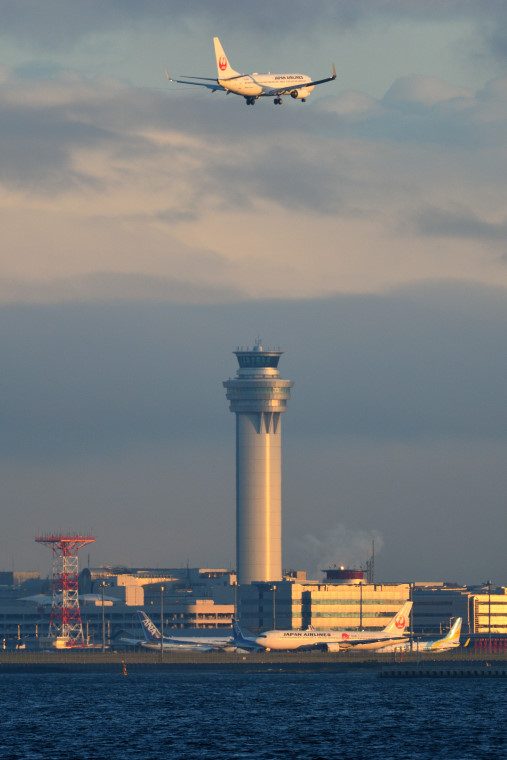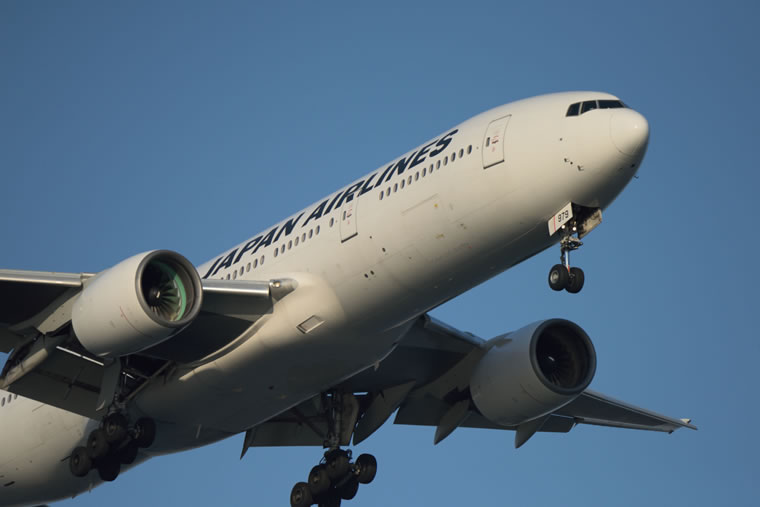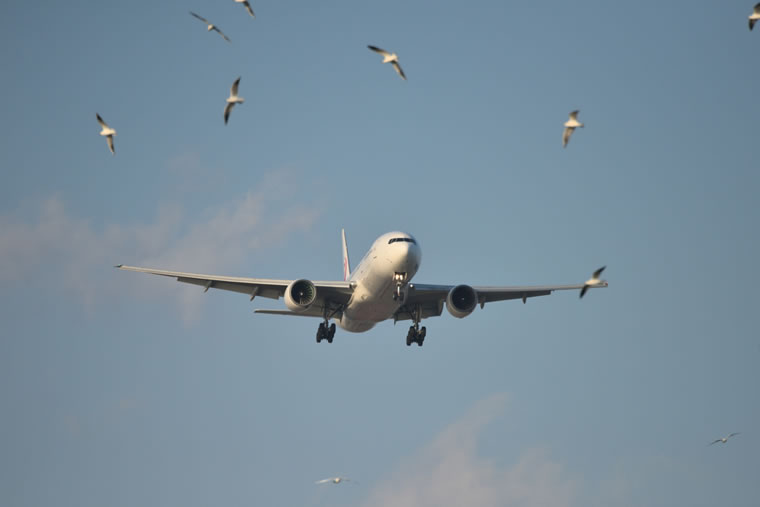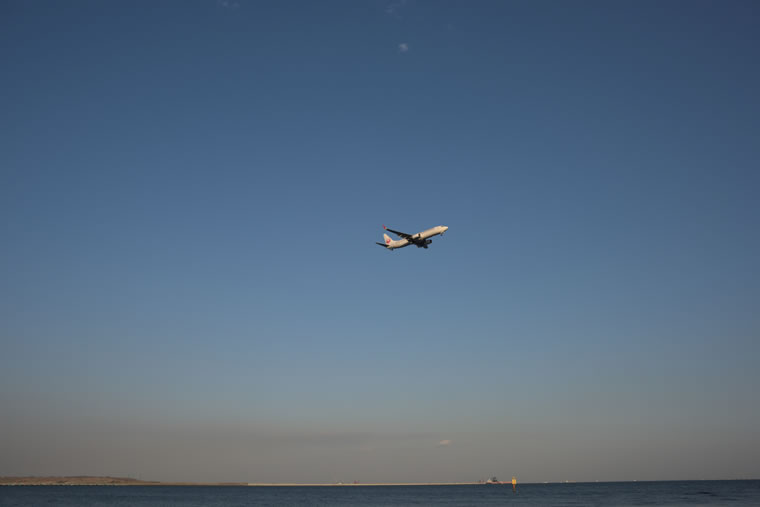Photographing Airplanes
Group-area AF produces crisply-focused shots of airplanes and other fast-moving subjects.
It is similar to dynamic-area AF, but in dynamic-area AF the camera focuses on the
subject in the selected focus point, with surrounding focus points acting as backup
in the event that the subject slips out of the selected point. With group-area AF,
the camera selects the optimal focus point from a group of five, in effect letting
you focus on a wide area and ensuring precise, hassle-free focus on hard-to-frame
subjects.
Professional photographers skilled in smoothly tracking fast-moving
subjects use dynamic-area AF, which lets them focus on a specific location in the
frame, but group-area AF is effective for subjects that can’t be tracked smoothly
and consequently seem to move erratically, featureless subjects that are a challenge
for autofocus, and subjects that function as incidental background elements.
To photograph planes using group-area AF, frame your shot with the focus location
in the vicinity of the cockpit. Position the focus group using the multi selector,
frame the shot, and take the picture. It may be a good idea to use continuous-servo
AF.
Photographing fast-moving subjects requires more attention to blur
than usual. A tripod is recommended if you are photographing the plane from the side.
The tripod doesn’t need to be very big, as your objective is only to reduce
blur. A monopod should be enough. Remember to turn vibration reduction off when using
a tripod. You should also choose as fast a shutter speed as possible to reduce blur.
Choose shutter-priority auto mode and use auto ISO sensitivity control. The shutter
speed should be about four times the focal length, or approximately 1/1600 seconds
for a 400mm lens. One other thing: for easy close-ups when photographing airplanes
using a zoom lens, zoom out to find your subject and then keep it in the frame as
you zoom back in.
For impromptu hand-held shots of aircraft, photograph your subject from the front.
The apparent speed of moving objects drops when they are photographed from the front,
giving you more to frame the shot and choose a focus point. You’ll still need
to take steps to reduce blur, so choose a fast shutter speed, and turn vibration reduction
on if you are using a VR lens. Group-area AF also works well with wide-angle lenses,
and has no difficulty focusing on planes surrounded by sky, so feel free to try your
hand at using planes as incidental elements in skyscapes.
Planes will change
runways and takeoff and landing directions depending on the wind. You can use websites
and smartphone apps for information on which runways are in use at any given time.
Information gathering is an important photographic technique.





